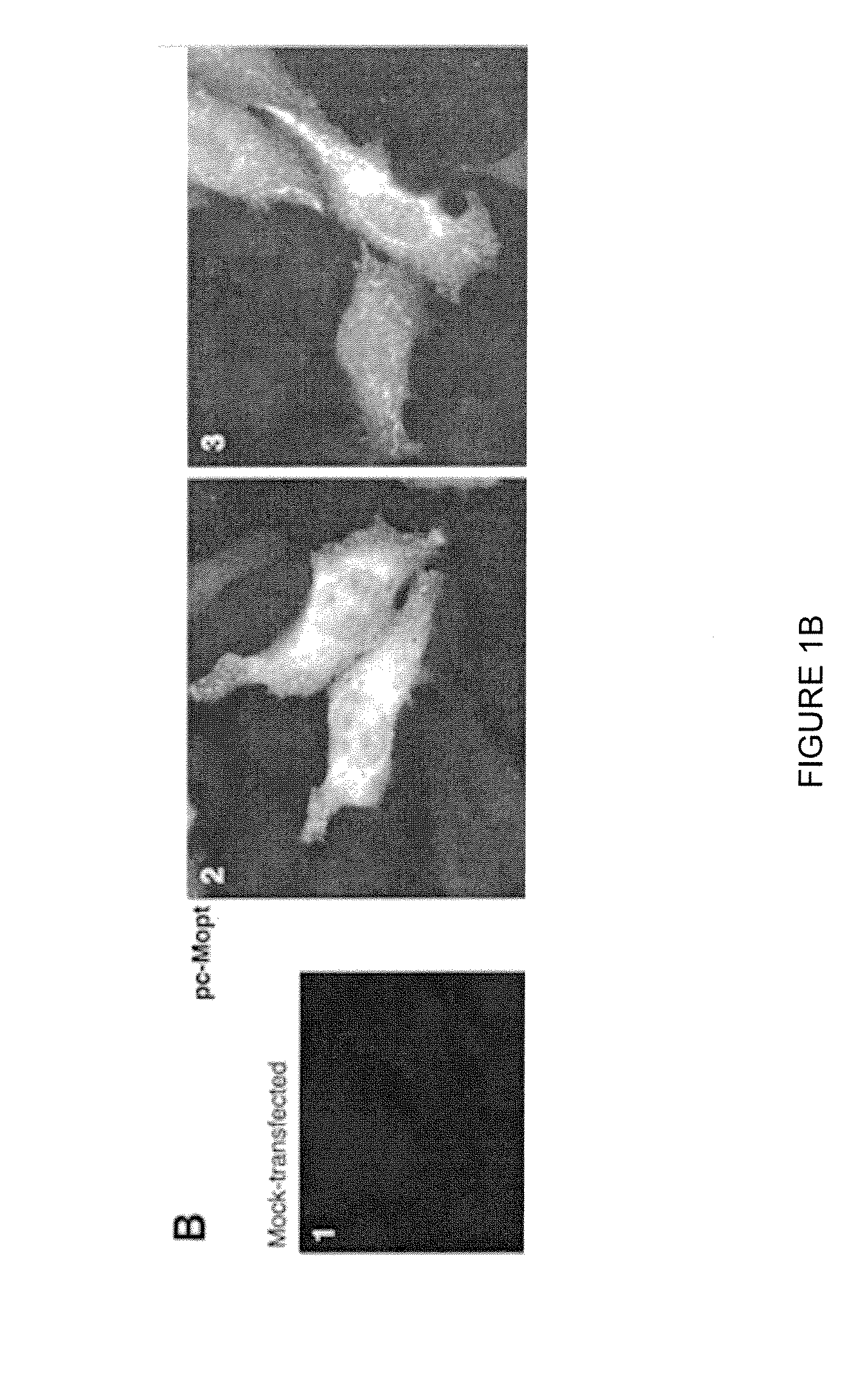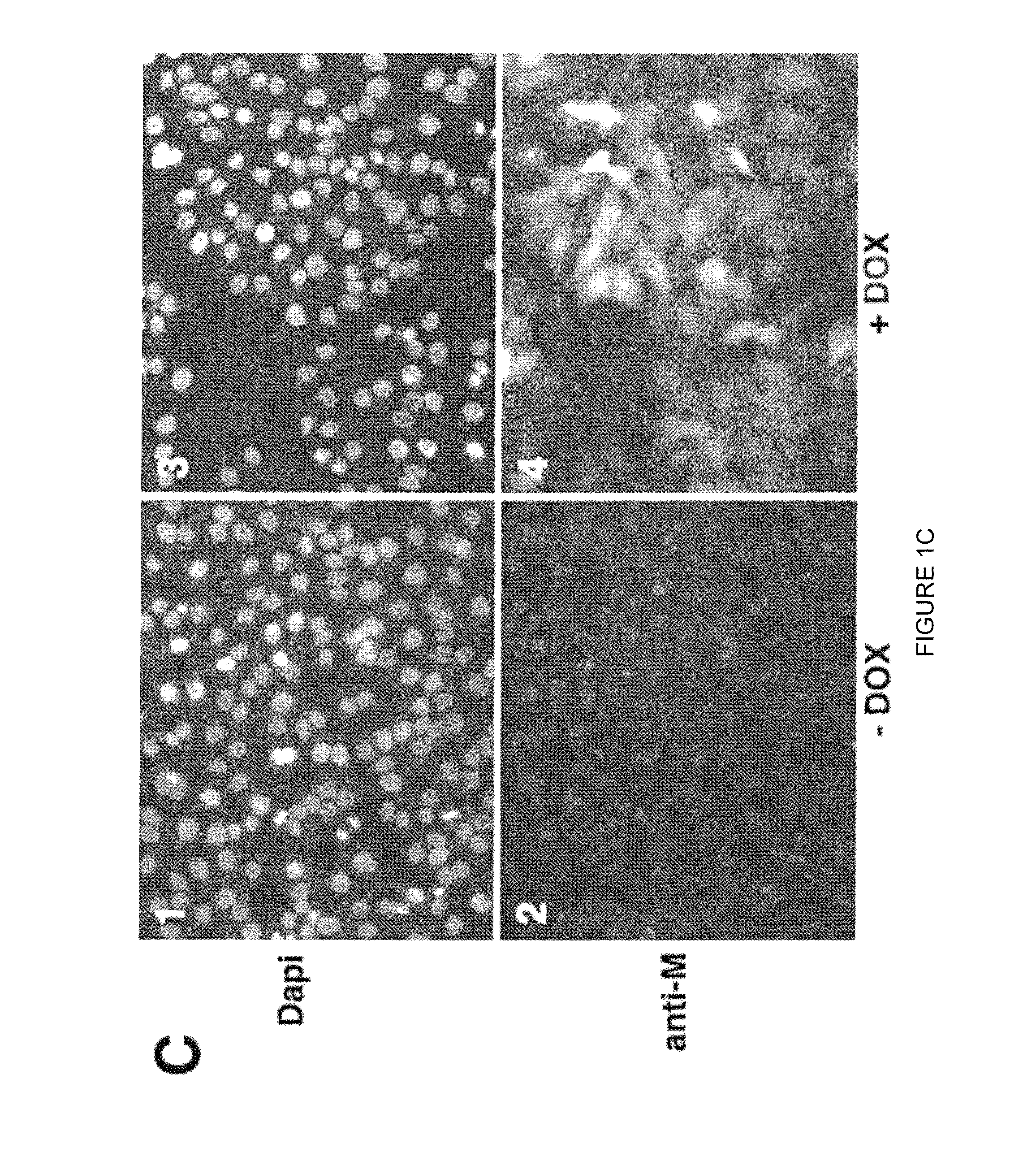Engineered respiratory syncytial viruses with control of cell-to-cell virus transmission for enhanced safety of live virus vaccines
a technology of respiratory syncytial viruses and cell-to-cell virus transmission, which is applied in the field of vaccines against diseases caused by paramyxoviridae viruses, can solve the problems of large amount of antigen production, and achieve the effect of high levels of rsv antigens
- Summary
- Abstract
- Description
- Claims
- Application Information
AI Technical Summary
Benefits of technology
Problems solved by technology
Method used
Image
Examples
example 1
REFERENCES FOR EXAMPLE 1
[0106]1. Bachi, T., and C. Howe. 1973. Morphogenesis and ultrastructure of respiratory syncytial virus. J Virol 12:1173-80.[0107]2. Batonick, M., A. G. Oomens, and G. W. Wertz. 2008. Human respiratory syncytial virus glycoproteins are not required for apical targeting and release from polarized epithelial cells. J Virol 82:8664-72.[0108]3. Batonick, M., and G. W. Wertz. 2011. Requirements for Human Respiratory Syncytial Virus Glycoproteins in Assembly and Egress from Infected Cells. Adv Virol 2011.[0109]4. Bitko, V., A. Oldenburg, N. E. Garmon, and S. Batik. 2003. Profilin is required for viral morphogenesis, syncytium formation, and cell-specific stress fiber induction by respiratory syncytial virus. BMC Microbiol 3:9.[0110]5. Branigan, P. J., C. Liu, N. D. Day, L. L. Gutshall, R. T. Sarisky, and A. M. Del Vecchio. 2005. Use of a novel cell-based fusion reporter assay to explore the host range of human respiratory syncytial virus F protein. Virol J 2:54.[011...
example 2
Scan Mutations of M Protein
[0167]FIG. 6 shows the nucleotide sequence encoding the unmodified M gene from RSV A2 strain (FIG. 6A) and the sequence of the codon-optimized M gene used to generate M-expressing cells (FIG. 6B). FIG. 7 shows the amino acid sequence of unmodified M protein from the RSV A2 strain.
[0168]Scan mutation assays, which replace selected amino acids in the primary sequence of a protein with different amino acids, usually sequentially along the length of the protein sequence, are known in the art and are used to identify sections of the protein that are required or important for activity. FIGS. 8A and B show exemplary mutants of M protein derived by inserting an epitope of 9 amino acids in a scanning fashion at various positions along the length of the M protein.
[0169]As recognized in the art, alanine scanning mutations are a more specific type of scanning assay. In this method, each (or selected) amino acid residues of a protein sequence of interest are replaced w...
example 3
[0173]In Examples 1 and 2, a system was used to test mutant M protein in which a recombinant attenuated virus with a “first generation” mutant M-null protein also expressed a tet transactivating protein, and induction of expression of M was carried out in a cell line carrying the M gene under control of tet-responsive elements (TRE). The first generation M-null construct to is depicted schematically in FIG. 11 (see middle section of figure). In this system, the M protein is expressed from the plasmids in all cells after induction with doxycyclin, whether or not virus from a mutant M sequence is replicating in the cells, resulting in cytotoxic effects to the cell culture prior to the viral exploitation of the cell for amplification of the mutant M protein. The titers obtained in such systems are generally low (−105 PFU / ml) and the cytotoxic effect on H2-M cells is most likely the reason, or one of the reasons, underlying the low titers. The problems / challenges of the first generation...
PUM
| Property | Measurement | Unit |
|---|---|---|
| Immunogenicity | aaaaa | aaaaa |
| Antigenicity | aaaaa | aaaaa |
Abstract
Description
Claims
Application Information
 Login to View More
Login to View More - R&D
- Intellectual Property
- Life Sciences
- Materials
- Tech Scout
- Unparalleled Data Quality
- Higher Quality Content
- 60% Fewer Hallucinations
Browse by: Latest US Patents, China's latest patents, Technical Efficacy Thesaurus, Application Domain, Technology Topic, Popular Technical Reports.
© 2025 PatSnap. All rights reserved.Legal|Privacy policy|Modern Slavery Act Transparency Statement|Sitemap|About US| Contact US: help@patsnap.com



